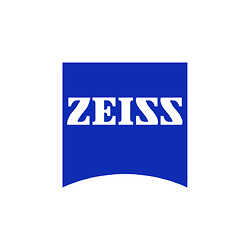AI-Driven Microscopy Image Analysis in Pharma and Biotech
Extract breakthrough discoveries from large, complex data sets.
The explosion in biomedical research is providing opportunities for pharma and biotech industries to develop new drugs, applications, and technologies. Innovation requires complex experimental designs which result in unmanageable, multi-dimensional data sets. Without automated analysis, companies face difficulties moving from data collection to groundbreaking discoveries. ZEISS AI-based image analysis addresses three main challenges to aid innovation:
· Insights: Analyze image data to extract comprehensive read-outs.
· Automation: Increase throughput and efficiency with large data volumes.
· Reproducibility: Ensure reliable results today and tomorrow, across users and sites.
The Limitations of Classical Image Analysis
Drug discovery and biotech researchers have long been pursuing methods for automating image analysis. The common approach has been to apply a sequence of processing functions (like smoothing, edge detection etc.) followed by threshold-based segmentation. Such sequences can be configured to set up basic analysis pipelines for typical tasks like identifying and counting nuclei, cells, and other sub-cellular features of interest. Despite its power for many standard image analysis tasks, this classical threshold-based image segmentation has limitations which can cause significant setbacks for large-scale analyses of complicated data sets.
These algorithms only consider a small subset of image parameters, most notably brightness. Images must be highly consistent in terms of target signal intensity and homogeneous background. These pipelines will often fail with heterogenous sets of images, leading to artifacts or incomplete analysis. Building and testing the pipelines requires experience and proficiency in analysis algorithms. Such reliance on a specific skillset can lead to inconsistent results when there is a heterogeneous level of expertise among the scientists performing image analysis, or when there is a lack of the necessary expertise altogether.
Harness Artificial Intelligence to Advance Automated Image Analysis
Artificial Intelligence (AI) enables computers to mimic human intelligence. AI can learn to identify objects in images without being explicitly programmed, similarly to how we as human beings learn.
One form of AI is Machine Learning (ML), which allows machines to learn by extracting feature patterns from data. ML can assess features beyond just pixel intensity, e.g., textural information, which yields more robust results from data sets that include highly variable images.
Deep Learning (DL) is a specialized form of ML which learns from interpreting vast amounts of data with millions of parameters. While it does require more data to feed the algorithm, DL can mimic how multiple layers of networked neurons process data, enabling it to successfully process very complex and difficult to segment data sets.
AI-Powered Pipelines Yield Outstanding Results in Challenging Scenarios
We train AI by using a representative subset of images containing features of interest, e.g., cell nuclei. Instead of defining a sequence of processing steps to achieve a desired segmentation outcome (as in conventional image analysis), the desired outcome is reinforced in training and the AI automatically optimizes the algorithm to achieve this very segmentation. AI-powered analysis pipelines yield outstanding results, even when applied to particularly challenging imaging scenarios, like low-contrast imagery (e.g., label-free) and images with high densities of objects (e.g., confluent cell culture or tissues). Furthermore, AI pipelines are readily automated and applied to large data sets to extract robust, statistically relevant insights about biological phenomena.
Learn more here.
